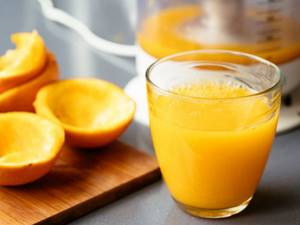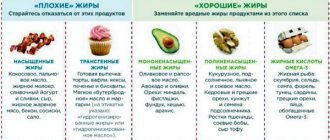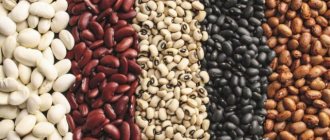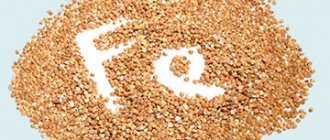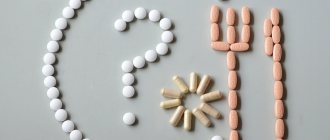One of the most essential microelements for the functioning of the human body is iron. Its atoms travel through blood vessels, like tugboats, catch oxygen and deliver it from the lungs to human tissues and organs, and pull carbon dioxide back. This process is continuous. “Downtime” and “empty” are not provided for by nature.
Why does the body need iron?
The main role of iron in the body is determined by the fact that it is responsible for the level of hemoglobin in the blood, and is also part of hundreds of enzymes, thereby performing many important functions. The main thing is the transport of oxygen to all cells, tissues and organs.
The role of iron in the body:
delivery of oxygen to all cells and organs; responsible for the process of hematopoiesis; responsible for DNA production; participation in the life of every cell of the body; provides energy metabolism; supports the body's immune system; participates in redox reactions; ensures body growth and the formation of nerve fibers.
And this is not all that iron is responsible for. Taking it during pregnancy is especially important, since during this period a woman experiences an acute deficiency of the element, which can ultimately lead to serious consequences.
If your iron levels are low, you are at risk of getting sick more often and may feel tired and sluggish.
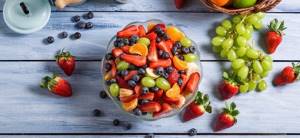
Iron in food. What interferes with microelement absorption?
Excess iron in the body prevents other microelements from being absorbed.
It is important not only to eat foods rich in iron, but also to do it correctly.
Since there are antagonist products that reduce the absorption of a particular microelement. Iron is no exception. Foods that contribute to poor iron absorption:
- Foods rich in calcium - milk, dairy products, cheeses, sesame seeds, dried fruits. Therefore, your favorite buckwheat porridge with milk does not contribute to the absorption of beneficial microelements from cereals.
- Tannins are natural compounds that give foods an astringent or astringent taste. These substances bind protein molecules that carry hemoglobin even at the stage of chewing food in the oral cavity. Tannins are found in both green and black tea, persimmon and some grape varieties.
- Phytins are a group of substances contained in whole grain flour. Therefore, semolina porridge is not recommended by pediatricians as complementary foods in the first year of a child’s life.
- Antacids, vitamin E – form poorly soluble compounds with iron, enhancing the excretion of the microelement from the body.
- Alcoholic drinks contribute to the destruction of iron in food and remove it from the body.
Read: Lipetsk pump room - mineral water endowed with healing qualities
Conversely, an excess of this microelement in the diet prevents the absorption of calcium, tannins, and vitamin E. Therefore, the diet must be balanced, since an excess of one substance can lead to a deficiency of other vital elements.
Percentage of iron absorption from foods
The body does not produce iron on its own, so it must constantly be replenished with the help of special medications or products. In our body, the amount of hemoglobin ranges from 2.5-4.5 mg, and if reserves are not replenished, the disease begins to progress.
Hemoglobin is absorbed by 35% from foods that help saturate the blood with oxygen and improve the viability of red blood cells. However, it is worth considering that there are several types of iron, namely heme (divalent) and non-heme (trivalent).
Heme-containing (heme) iron.
This type is mainly found in meat products. Most of all it is found in beef and veal liver, as well as in eggs and white fish. This type of iron is absorbed by 20-30% by our body, which is quite capable of satisfying its daily requirement.
Non-heme-containing (non-heme) iron.
Non-heme can be obtained from plants, that is, from fruits and vegetables, which contain approximately 10% of the essential element for anemia. Such products are recommended for consumption by vegetarians; they are the ones who most often suffer from anemia, since their diet does not contain animal products with a high percentage of absorption.
Unlike heme-containing iron, non-heme-containing iron is absorbed by the human body much better and faster. It is not without reason that recently more and more people are switching to vegetarianism, thereby replacing animal protein with plant protein. This type of iron is found in most fruits and vegetables, legumes, garlic and horseradish are rich in it. An important nuance: when consuming plant foods, protein absorption depends on accompanying products, namely, citrus fruits promote better absorption of non-heme iron, and dairy products can reduce its level in the blood. Therefore, you should eat more varied foods and not limit your diet.
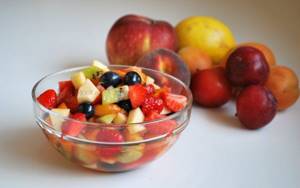
FEATURES OF ABSORPTION OF DIFFERENT FORMS OF IRON
Heme iron compounds are released from protein chains under the action of digestive enzymes. And the resulting metalloporphyrin is absorbed by enterocytes (epithelial cells of the small intestine). Inside them, iron is released and oxidized from a divalent to a trivalent state. In this form, it binds to the transferrin protein and enters the blood. The bioavailability of heme iron can reach 50%, with an average of 30%.
A different mechanism is used for the absorption of non-heme compounds. In the stomach, divalent iron ions bind to a special protein called gastroferrin and are transported to the intestine. The absorption process occurs with the help of a nonspecific proton-dependent ion transporter. But this transporter is also involved in the transfer of copper, zinc and other divalent cations. This may be a factor limiting the availability of iron from non-heme compounds. Other ions will compete with iron, slowing down its absorption in the intestines.
How to determine iron deficiency in the body
First of all, a lack of iron in the body is expressed in general weakness, increased fatigue, and decreased performance. The skin becomes pale, dry, rough, hair literally “creeps out”, nails constantly split and break, and cracks appear in the corners of the mouth and on the heels.
Not only your appearance, but also your internal organs can suffer from anemia. For example, upon careful examination of the gastrointestinal tract, it often turns out that the tissues are poorly supplied with blood and look pale, and this in turn affects the performance of vital organs.
Symptoms of iron deficiency in the body:
general weakness, increased fatigue; constant dizziness; shortness of breath and rapid heartbeat with slight exertion; numbness of the limbs; sleep disturbance, insomnia; frequent colds, infectious diseases; problems with the gastrointestinal tract; decreased appetite, difficulty swallowing food; change in taste and smell in a specific direction (desire to eat chalk, raw cereals, addiction to the smell of acetone, paints, etc.); problems with nails (become brittle, split, spoon-shaped indentations appear); problems with hair (they begin to fall out, become dry, brittle, early gray hair appears); deterioration of the skin condition (becomes dry, pale and sallow, with multiple microcracks, jams appear in the corners of the mouth.
Of course, to make an accurate diagnosis, the first step is to take a general blood test in a medical laboratory.
The first sign of iron deficiency will be a low hemoglobin level:
below 130 g/l in men; below 120 g/l in women.
Causes of high iron loss
Loss of iron in our body can occur for various reasons, and the main ones are fasting, strict diets, vegetarianism, and blood loss associated with heavy periods. As a result, there is a possibility of developing anemia or anemia, as it is commonly called in medicine.
Anemia is a decrease in the level of hemoglobin in the blood, which is often combined with a decrease in the number of red blood cells. It can be light, medium and heavy.
According to statistics, from 800 million to 1 billion people on the planet suffer from this disease. Young middle-aged women and teenagers are primarily susceptible to anemia. It is impossible to diagnose this disease on your own; there are special laboratory tests for this. However, preliminary symptoms may indicate that the hemoglobin level is outside the acceptable range.
If your hemoglobin level has not dropped below 100 g/l, the situation is not critical, but you definitely need to pay special attention to replenishing the iron supply in your body with iron-containing products. At a level of 90 g/l and below, moderate and severe anemia occurs; in this case, treatment is prescribed by a doctor.
If you have been diagnosed with anemia, in addition to a proper diet rich in iron, it is quite possible that you will need to take iron supplements. And, of course, don’t forget about foods containing iron, as the main source of nutrients.
And forget about strict diets forever. Beauty, although it requires sacrifice, but if your own health is sacrificed, it’s time to think about the consequences.
The body's daily requirement for iron
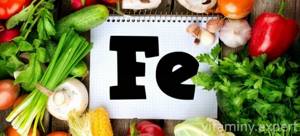
The normal content of the microelement in the body is from three to four milligrams. The main part of the substance (approximately 2/3) is concentrated in the blood. The remaining concentration of iron is concentrated in the bones, liver, and spleen. A decrease in the level of a microelement occurs for natural reasons - menstrual cycles, sweating, exfoliation of the dermis. If there are no foods rich in iron in the diet, this inevitably leads to a deficiency of the substance, since the spent reserves are simply not replenished. To maintain a microelement at the required level, about 10-30 milligrams of this compound should come from the daily diet.
The exact amount depends on age, gender and other related factors (see table below).
In case of anemia, it is necessary to replenish the blood with hemoglobin, however, each person will have their own suitable daily intake, which is determined by a hematologist.
To treat anemia and replenish the blood with red blood cells, the following daily dose is required:
- Pregnant and breastfeeding women should receive 20-25 mg per day.
- Vegetarians need at least 10-20 mg per day.
- Adults need 10-15 mg per day, but women need more ferrum, this is due to monthly menstruation, during which a large amount of blood is lost.
- Children under 18 years of age need 10-15 mg per day (especially during puberty).
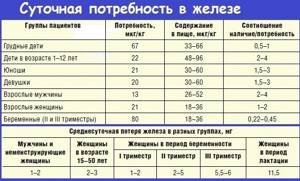
A serious consequence of the development of iron deficiency anemia during pregnancy is oxygen starvation, which can lead to slowing and stopping of fetal growth, as well as to termination of pregnancy and premature birth.
Failure to comply with the daily intake of iron leads to disruption of many functions, which even affects appearance. The poor condition of the skin and hair is not always associated with age or incorrectly selected cosmetics. And, when thinking about buying another jar of expensive cream, you should take a closer look at your own diet, since the problem may lie precisely in the lack of iron. This situation is especially relevant for those who often go on diets, wanting to lose weight, limit themselves to eating only some food, paying attention to calorie content, and not to the usefulness of the composition.
For anemia, it is recommended to consume foods rich in iron every time during the day, since in elderly people, if there is a lack of hemoglobin, heart attacks and strokes occur. If you do not calculate the daily requirement, there will be a shortage or excess, and this threatens the development of the disease.
What should you consider when creating a menu?
It is worth paying special attention to the menu, since it determines how much the amount of hemoglobin in the blood increases per day.
Before creating a menu and adding products, it is recommended:
- Consult with a hematologist and find out exactly what hemoglobin levels are in the blood and what daily requirement will be appropriate and safe.
- Introduce into the diet only those foods that do not provoke the progression of anemia and the occurrence of an allergic reaction (especially foods containing proteins).
- Find out which foods contain a large amount of hemoglobin, and whether they can be consumed by pregnant women and children under 3 years of age
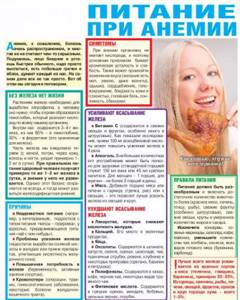
Iron-rich foods for anemia are necessary for anemia, which ones can be found out from a hematologist, who will explain how regularly they should be consumed.
If you have iron deficiency anemia, you need to consume iron-containing foods, as they stimulate improved blood circulation and help get rid of the disease. They can be consumed at any time of the day, if there is no allergic reaction or other contraindications.
Where can you find iron?
Only a balanced diet with sufficient levels of proteins, fats, carbohydrates and essential microelements helps strengthen and maintain immunity and body tone. Since school, we all know that the first positions in iron content are occupied by meat and seafood, as well as any products of animal origin. Now it remains to figure out what can be eaten and what is better left in the past.
Which meat has more iron? Pork, chicken and beef liver, beef heart and various types of meat, from rabbit and turkey to lamb and veal. There was also fish and seafood. Shellfish are unconditionally placed in first place, because they contain about 30 mg of iron. Next come mussels, oysters, tuna, mackerel and black caviar.
As for other animal products, you should remember the egg yolk. The leaders in iron content among plant foods are buckwheat, oatmeal, and corn. This list also includes legumes such as lentils, beans, and peas. The answer to the question of which foods contain heme iron is simple. As practice shows, you can find this vital element for the body in absolutely any product.

What affects iron absorption
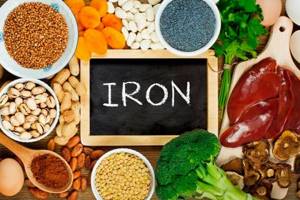
Enriching the diet with foods high in microelements does not always compensate for its deficiency in the body. There are foods that interfere with the absorption of the substance. This includes products with polyphenols, calcium and tannin. This fact should definitely be taken into account by those who suffer from iron deficiency.
Dairy products do not contain this microelement, are rich in calcium, and, therefore, lead to a decrease in the substance obtained from food. Strong tea and coffee are not the best allies of iron. Lovers of these drinks should get into the habit of postponing the enjoyment of a cup of invigorating coffee or tea until later after a meal. In general, it is better to replace Coca-Cola with dried fruit compotes or rosehip infusion.
Products with heme and non-heme iron. Table
Beef contains the most iron among meat types.
How to saturate the body with useful microelements? A table of foods high in iron will help you create a menu.
Read: Diet for prostatitis and prostate adenoma: how to eat properly
Please note that if you choose non-heme iron, only 2 to 10% of it will be absorbed, and 35% of heme iron will be absorbed. Amount of iron, mg per 100 g:
Products:
- liver - 20.2
- pork - 6.9
- beef - 17.5
- heart - from 4.1 to 4.8 in different animals
- tongue - 3.2–4.2 in different animals
Meat:
- pork - 1.8
- beef - 3.6
- chicken - 1.6
- turkey - 1.4
- sardine - 2.6
Egg yolk:
- chicken - 6.7
- quail - 3.2
- cottage cheese - 0.4
- cheeses - from 17 to 37 depending on the fat content of the milk and the type of cheese
- cow's milk - 0.1
- oats, rye - 3.9
- buckwheat - 6.7
- legumes - from 1.5 to 11.8 depending on the type
- nuts - from 2.9 to 4.6 depending on the variety
- apples - 0.1
- pomegranate - 1.0
- fresh spinach – 3.5
- dry spinach – 35
- carrots - 0.8
- pear - 2.3
- potatoes - 1.2
- tomatoes - 0.6
- currant - 1.0
- mushrooms - 12.0
- peas - 1.4
So the well-known iron-containing foods - apples and pomegranates - actually contain extremely little of this trace element.
The leading positions are occupied by liver and various types of meat.
Which fruits have a lot of iron?
Hemoglobin is a protein that transports water and oxygen atoms into the cells of tissues and organs. If there are not enough hemoglobin cells, then, accordingly, the oxygen cells have nothing to move on. Tissues and organs experience oxygen deficiency, which leads to disruption of metabolic processes and various diseases.
People who do not like or fundamentally do not eat iron-rich meat and seafood often fear anemia. However, you can replenish the balance of this substance even with the help of everyone’s favorite fruits and vegetables. The portion of iron contained there will help avoid many problems.
Eating certain types of fruits can help with this problem.
List of fruits
- Apples. Apples contain vitamins A, B, C, E and H, as well as calcium, potassium and iron. They not only saturate the blood, but also help get rid of anemia, due to which iron deficiency anemia goes away. It is necessary to eat red apples, as they contain a large amount of vitamins.
- Pomegranate. This fruit contains vitamins C, B6 and B12, as well as other microelements, including iron. Pomegranate helps strengthen blood vessels, balance hematopoiesis and improve heart function, thereby improving metabolism.
- Peach. Peach contains vitamins C, B, K, E and PP, which help the absorption of hormones and improve blood circulation. For anemia, it is recommended to use it fresh or with yoghurt, but it is worth considering that frequent use may lead to allergies.
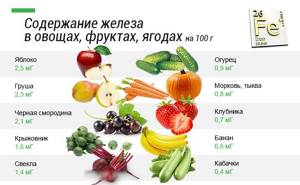
- Apricot. This fruit contains 2-3% iron, as well as vitamins B6, B2 and C, which supply red blood cells with oxygen. Apricots stimulate the intestines and stomach, and this helps improve blood circulation and metabolism in the body.
- Quince. This unusual fruit is rich in vitamins A, B1, B2 and PP, and also contains magnesium and iron salts. It can be used by people at any age, as it not only treats anemia, but also helps get rid of diseases of the heart and blood vessels.
Other methods
If all of the above treatment methods do not bring the desired effect, doctors prescribe drug therapy. Basic recommendations:
- Taking calcium-based drugs (calcium chloride) in therapeutic doses. The course of treatment can be 3 weeks, followed by a mandatory break.
- Refusal of multivitamin complexes. You should also avoid medications that contain B-group vitamins in therapeutic dosages.
- In critical cases, hospitalization is prescribed. In this case, droppers based on sodium chloride, as well as saline, are used - they help reduce the concentration of iron in the blood, provide the body with all micronutrients, and accelerate the elimination of toxins (which actively accumulate with excess hemoglobin).
When treating in a hospital setting, the main task for doctors is to establish the exact cause of the sharp increase in hemoglobin. And, if possible, completely eliminate this factor. Unfortunately, quite often chronic diseases of the endocrine system lead to an increase in hemoglobin, which cannot be completely eliminated. To normalize the patient’s condition, he will have to constantly adhere to the above recommendations in terms of diet.
Also, to quickly reduce hemoglobin, doctors can prescribe Regidron - this is the safest method of normalizing the water-salt balance. In essence, this drug is a set of minerals and salts, the level of which decreases as blood viscosity increases.
Regidron should be taken for at least 4 days in small doses (up to 2 sachets per day in the form of a ready-made solution). But it is worth considering that taking Regidron in therapeutic doses can provoke dysfunction of the urinary system, inflammation of the ureters (if there were stones and sand in the kidneys) and also cause symptoms of toxicosis (due to excess sodium, which, when in excess, acts as a toxin and also reduces blood potassium level).
Product compatibility
Foods that are rich in iron can be combined during cooking for anemia.
The best combinations will be:
- Cherries, strawberries, currants and gooseberries (especially in compotes and juices)
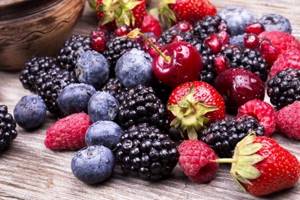
- Apple, peach, apricot and quince (in compotes, yoghurts and juices).
- Milk, cream, eggs and oatmeal cookies (great for baking or snacking).
- Carrots, spinach and parsley (especially in salads).
- Oatmeal, milk, juice or compote (especially suitable for breakfast).
- Chicken, eggs and mushrooms (especially suitable for lunch).
What fruits increase hemoglobin?
If there is a significant lack of hemoglobin, a person is prescribed special therapy. As a rule, these are injectable drugs. However, a person’s lifestyle and diet play an important role in the level of hemoglobin in the blood. Most iron (namely, it helps increase hemoglobin levels) is found in meat and seafood , but some fruits and vegetables also contain this trace element. This is especially important to know for people who, for some reason, exclude meat and seafood from their diet.
The iron content in dried apricots is high - 3.2 mg per 100 g of berries. At the same time, dried apricots are a product available at any time, it is allowed even for diabetes mellitus (however, no more than a couple of times a week, the berries should first be soaked in water for several hours).

Quince also contains quite a lot of iron - 3 mg per 100 g. In terms of its content, it is comparable to raisins. Interestingly, not only fresh quince is useful, but also dried one. And the amount of iron in raisins remains the same, even if you cook compote from it. Persimmon is somewhat inferior to quince and the described dried fruits in terms of iron content. However, it is also rich in this microelement - 2.5 mg/100 g. In addition to iron, orange fruits are rich in antioxidants and ascorbic acid.

If you regularly consume pears, you also don’t have to worry about low hemoglobin levels, since 100 g of this juicy fruit contains 2.3 mg of iron. There is slightly less of this element in apples - 2.2 mg/100 g. Nevertheless, the apple remains one of the most popular fruits for maintaining iron levels in the body. This is due to the availability of apples and the large number of other beneficial properties they have. It is no coincidence that an old English proverb says that it is enough to eat 1 apple a day to forget about doctors. Melon and watermelon also contain iron, although in small quantities (1 mg/100 g). If you want to increase hemoglobin with the help of fruits and berries, it is better to choose a different option than watermelon or melon. On the other hand, the presence of iron in them, albeit in a small amount, is a pleasant “addition” to the refreshing taste of these summer delicacies.
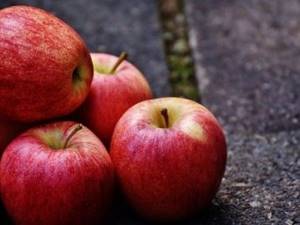
Bananas can also be a preventive fruit against anemia. They contain 0.8 mg/100 g of iron, but it is almost completely absorbed due to the large amount of folic acid (vitamin B9).
It should be understood that iron is found in greater quantities in fresh fruits, since heat treatment destroys most of the vitamins and microelements.
Raisins are also filled with many nutrients. Not only is it rich in B vitamins and potassium, but it is also an excellent source of iron. Just a quarter glass already contains 1 mg of iron.
Raisins are versatile and easy to add to your diet. It can be used in baked goods and main dishes where you can add a variety of flavors, or eaten alone for a quick and easy snack.
As with any dried fruit, just be mindful of the serving size. Even though raisins are small, they manage to provide you with a concentrated dose of vitamins and minerals, but that also means a concentrated amount of calories and sugar.
Another important point is that not all iron that comes from food is absorbed by the body. This can be prevented by calcium, polyphenols, and tannin. For example, dairy products not only do not contain iron themselves, but the calcium they contain interferes with its absorption from other products. This does not mean a complete rejection of milk, because calcium is also important for the normal functioning of the body. You just don't need to consume dairy products and fruits that contain iron at the same time. Tannin and caffeine also prevent iron from being absorbed. That is why passionate coffee drinkers and lovers of strong teas, who prefer these drinks to all others, often have low hemoglobin.
Almost all grains, including pasta, also interfere with iron absorption. Cereals oxidize iron, making it unsuitable for the formation of hemoglobin cells. Speaking of cereals, it is worth noting wheat baked goods. They also lead to iron acidification and reduce its absorption by an average of 15 g/l. To avoid anemia, it is better to give preference to rye bread.
Slows down the absorption of iron and protein. First of all, these are products with a high content of it - chicken meat, eggs. Intestinal diseases, infections, taking certain medications - all this also adversely affects the absorption of iron. Any illness, especially a long one, leads to the fact that all the body’s forces are aimed at recovery, so it cannot fully absorb all the necessary microelements from food. This is why it is so important to increase the amount of fruit in the patient’s diet (if there are no contraindications) during the recovery stage.
A large amount of coarse dietary fiber also reduces the rate of absorption of iron from food, which means less of it is absorbed. Naturally, all fruits contain soft dietary fiber (pectin), it does not affect the absorption of iron in any way, there is no contradiction here . It is better to avoid consuming fruits with bran (fiber, coarse fibers).
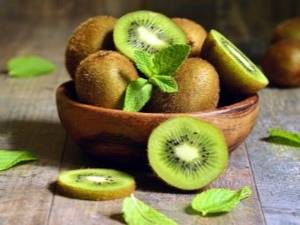
But vitamin C, on the contrary, improves the absorption of iron. That is why iron is absorbed very well from apples, even with an average content. The “fault” is the ascorbic acid contained in the latter. However, not only ascorbic acid, but also citric, succinic and folic acids also help iron to be better absorbed. Vitamin C is found in large quantities in fruits such as kiwi, pineapple, and all citrus fruits. Its content is high in raspberries, strawberries, black currants, and pomegranates. Thus, you can combine fruits that contain higher amounts of iron with the said fruits for maximum benefits.
Anemia (decreased hemoglobin levels) can occur due to strict diets, fasting, and avoidance of meat and seafood. In this case, it is impossible to compensate for the deficiency with fruits alone, even if they contain iron.
This means that it is important not only to eat healthy foods, but also to generally follow the principles of adequate nutrition.
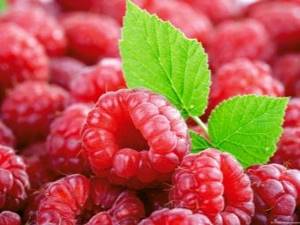
Can bananas be dangerous to your health?
Despite the rich composition of vitamins and microelements, bananas can be harmful to health. This is likely in two cases: if you do not wash them after purchase and if you store them incorrectly .
Why is it so important to wash bananas, because we peel off the skin and throw it away? Because bananas are an exotic fruit that does not grow in our latitudes. To get to supermarket shelves, it needs to travel several thousand kilometers. They are transported in tons in huge containers, which, in addition to fruit, may also contain small rodents. And they, as you know, are considered distributors of serious bacterial infections. Buyers do not need to entertain the illusion that if the fruit is externally clean, then there are no pathogens on its surface. They are simply teeming with them, and any laboratory analysis will confirm this.
This state of affairs is not a reason to refuse such a tasty and healthy fruit. All the buyer needs to do is wash the bananas in running water immediately after coming from the store. For additional protection, you can buy a special product for washing vegetables and fruits. It cleans products well from contamination, and it does not contain any potentially hazardous chemicals. Such simple manipulations will protect you from many problems.
Store bananas as a whole bunch in a dark and cool place. This will help preserve their beneficial properties and will not accelerate rotting.
What fruits lower hemoglobin?
Reduces hemoglobin primarily by a large amount of fluid. The blood becomes thicker, there are fewer enzyme substances in it - the level of hemoglobin decreases. Elevated hemoglobin levels usually occur in combination with increased blood viscosity. To avoid this, as well as to reduce hemoglobin, it is precisely the increase in fluid entering the body, as well as an increase in vitamin C in the diet.
However, when increasing your water intake, it is important to remember moderation. For a healthy person, the daily norm is 30 ml per kg of weight. Most of the daily amount should be drunk in the first half of the day. It is recommended to choose citrus fruits as a source of vitamin C. To reduce hemoglobin levels, special herbal decoctions based on artichoke, peony root, and cinquefoil are used.

If you have elevated hemoglobin, it is recommended to avoid rose hips, coffee and strong tea, and alcohol. To reduce the level of iron in fruits, they should be subjected to heat treatment - baked, cooked in purees, compotes. It is advisable to carry out heat treatment without covering the pan or stewpan. Cooking and stewing should be long (from 40-60 minutes, although the time depends on the type of fruit and the volumes being prepared). There are no special fruits that help reduce hemoglobin. It is enough to give up those that are famous for their high iron content and not eat fresh fruits containing iron. It is important to remember that the largest amount of iron comes not from plant foods, but from meat and fish.
If the goal is to lower the level of hemoglobin, then first of all you need to give up beef, liver, tongue, eggs and dairy products, salmon and other types of red fish, shrimp.
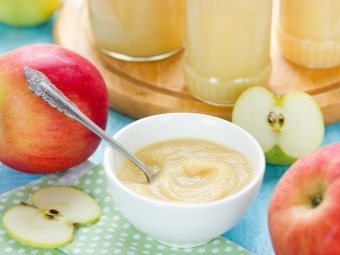
Folk remedies
Among the traditional methods of treatment, the truly effective ones (and recommended by doctors themselves) are:
- Mumiyo with water. It’s easy to prepare: add 0.5 grams of mumiyo to 1 glass of water (or 1 tablet if used in this form). Drink on an empty stomach. This helps normalize the water-salt balance, reduce blood viscosity, and accelerate the absorption of calcium.
- Infusion based on burdock root. It also affects the water-salt balance and slows down metabolism. To prepare such a decoction, you need to mix 150 grams of fresh grated burdock roots with 1 liter of boiling water and leave until it cools completely. Take 100 milliliters 4 times a day before each planned meal.
- Horsetail tincture. It has a strong diuretic effect, reduces the concentration of sodium in the blood, and normalizes the metabolic rate. For preparation, dried pagons of the plant are used. 30 grams of these are poured into a glass of boiling water, left for 2 hours, and drunk in one gulp. The course of treatment is no more than 7 days, then a mandatory break is taken for 5–10 days (to minimize the load on the urinary system).
- Aloe based tincture. It is prepared as follows: 35 grams of aloe pulp (without needles) is poured with 200 milliliters of strong alcohol (preferably moonshine or alcohol). Leave for 1 week in a dark place at room temperature. Take 4 – 6 drops 3 times a day after meals. You can replace aloe with agave - the biochemical composition of these indoor flowers is almost identical.
- Tincture of calendula. Ready-made can be purchased at almost any pharmacy. But you can cook it yourself at home. You will need 15 grams of dry calendula base and 150 milliliters of vodka. Leave for only 2 days, take 1 teaspoon 2 times a day (after breakfast and dinner).
- Clove tincture. Although this is an extremely bitter remedy, it helps to quickly reduce the bioavailability of iron. To prepare the tincture, mix 8 dried clove inflorescences and 50 milliliters of vodka. Leave for 3 days. Take 5 drops 3 times a day. The main thing is not to overeat or drink. It is generally better to abstain from food and drink for the next 1.5 hours after using the product.
Juices and compotes
To cure anemia you need to drink the following compotes:
- Compote and juice from cherries and apples. It is cherries and apples that contain all the necessary components, especially iron. Therefore, you can drink such compotes and juices at any time, as they help improve blood circulation.

- Peach and strawberry compote. The combination of peach and strawberry will not only help get rid of anemia, but also prevent blockage of blood vessels. Despite boiling, juice and compote do not lose vitamins A, B, C, K and E, which are needed for blood circulation.
- Compote and juice from blueberries and currants. Currants and blueberries contain vitamins A, B, C, K and E, which are not lost even during cooking. Therefore, by consuming compotes and juices from them, it is possible to improve immunity and blood circulation.
- Tomato juice. Tomato juice contains many vitamins, namely: A, B2, C, K and E, which help strengthen blood vessels. It can be consumed at any age, as long as there are no diseases of the stomach or pancreas.
How to increase your body's ability to absorb iron
How to increase your body's ability to absorb iron
Eat with Vitamin C
Vitamin C can increase the absorption of non-heme iron by more than 50 percent. Foods rich in vitamin C: citrus fruits, mangoes, berries, kiwi, pineapples, papaya, paprika and tomatoes. Try to eat one of these foods every time you consume any source of iron to maximize iron absorption. For example, if you have a salad with spinach and greens, add lemon juice and olive oil dressing. If you're stir-frying with broccoli and asparagus, add tomato and paprika...
